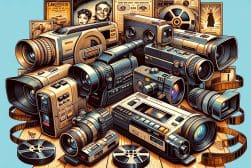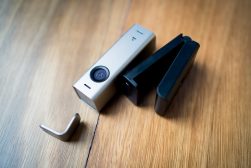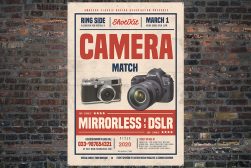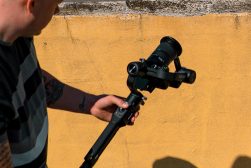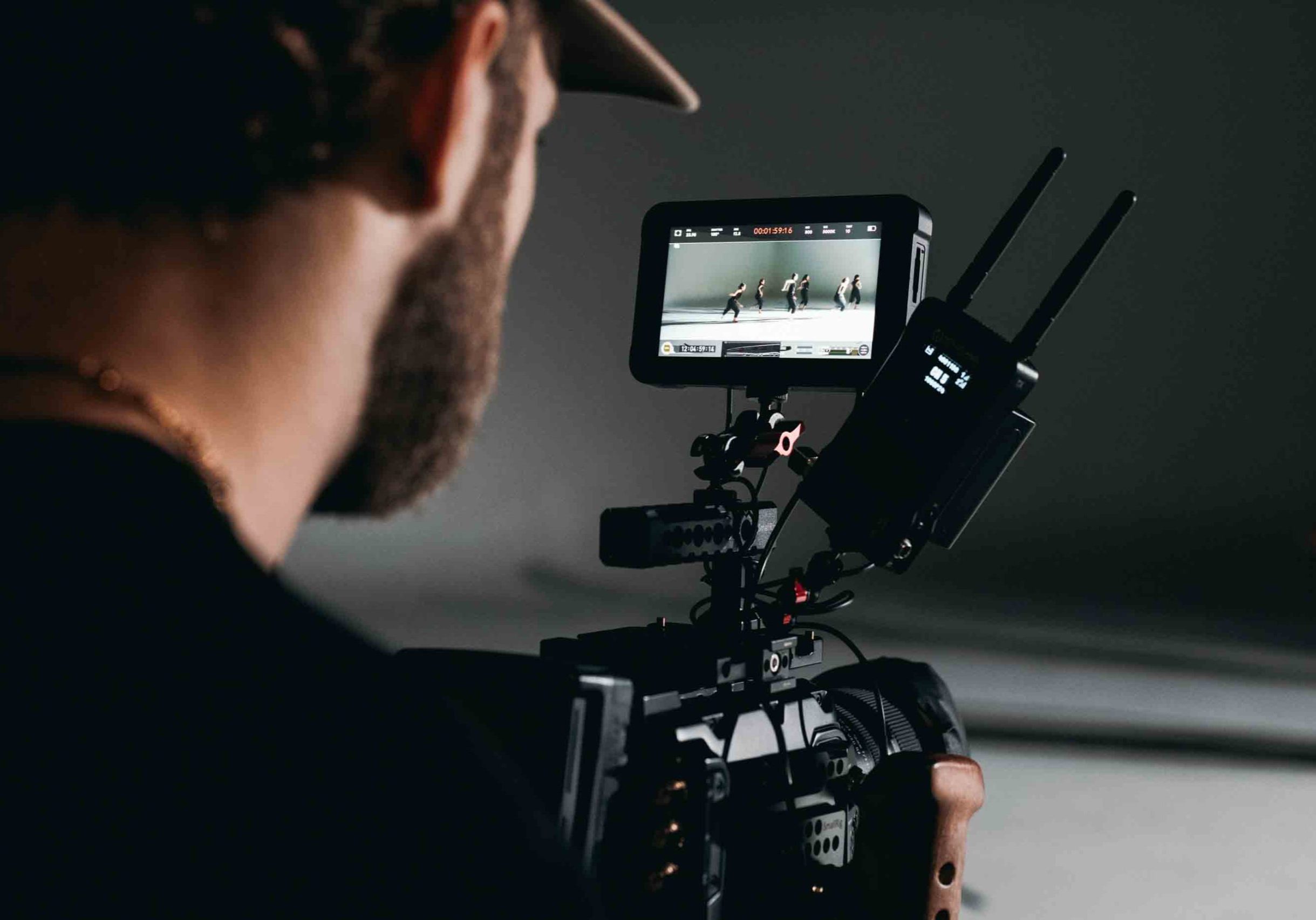
Using a Camcorder for Video in 2024 (vs DSLR / Mirrorless)
In this guide, we'll examine why you should consider using a camcorder for your movie-making this year rather than mirrorless or DSLR cameras.
For many filmmakers, a camcorder is better than a DSLR or mirrorless camera for video.
Despite the latest technology in modern DSLR and mirrorless cameras, a dedicated video camera provides key benefits for shooting video.
Many YouTubers choose digital cameras rigged with various accessories. But broadcast-style camcorders still reign supreme for certain uses.
I’ve used mirrorless cameras, DSLRs and camcorders to record footage. They all have pros and cons.
In this guide, we’ll examine why you should consider using a camcorder for your movie-making in 2024.
10 Reasons to Use a Camcorder vs. DSLR & Mirrorless Cameras for YouTube & Vlogging
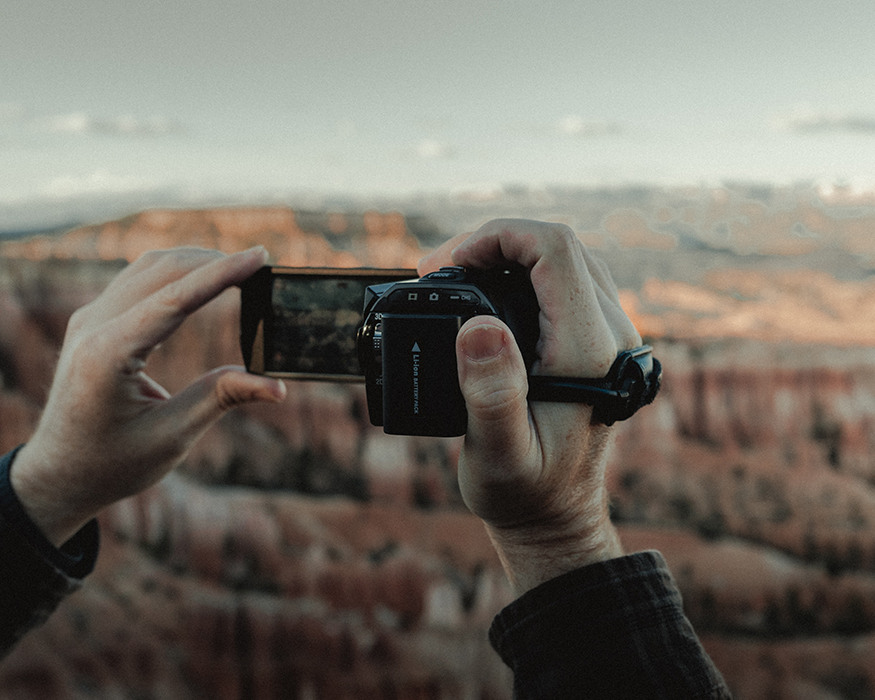
Image: Anthony Adu
Let’s look closer at why Youtubers and Vloggers prefer camcorders.
Camcorders are videocentric and are optimized for this purpose.
They have long recording times, a built-in zoom and a body designed for lengthy shoots.
Ultimately, the choice will depend on your creative vision as an aspiring cinematographer.
1. Video-Specific
Camcorders are number one when it comes to videoing. After all, they were designed specifically for the task.
Everything from the placement of their controls to their videocentric designed body.
A quality camcorder aims to produce ultra-high-definition film. So, use it correctly, and you will get high-definition videos.
Camcorders are user-friendly, and there is no need to configure settings. The controls and buttons are dedicated to videoing.
2. Compact
When videoing on the move, the last thing you want is to be bogged down with heavy equipment.
Filming with a mirrorless camera can involve the use of extra equipment.
Microphones, tripods, and extra lenses are some of the additional components needed.
All of this will add to your baggage weight.
The camcorder conveniently has everything needed for filming contained within one unit.
Organizing your video shoot will be a cinch without the hassle of tangled cords.
And you won’t have to worry about losing or forgetting equipment.
Compact, lightweight and portable, the camcorder is the ideal video travel companion.
3. Comfortable and Ergonomically Designed

Image: Daniel Lincoln
Camcorder’s bodies are designed for filming, making them ideal for extended video shoots.
DSLR and mirrorless cameras are designed to take one quick shot at a time.
The mirrorless camera ends up being awkward and cumbersome for lengthy filming sessions.
Particularly if it doesn’t have an electronic viewfinder and has to be held at eye level.
Camcorders fit snuggly into your hand and often come with a handy strap for extra support.
The strap is fantastic for keeping the camera steady and secure.
This is especially useful when you shoot video at awkward angles or while hanging off a speed boat.
When shooting in Asia, I found my camcorder was a hundred times more comfortable to use than my DSLR.
Filming all day did not feel like a strain, which was ideal when I was videoing daily.
4. Camera Shake Detection
Camcorders are designed to accommodate unavoidable shakes and hand quivers.
They have intelligent built-in programs to detect and neutralize camera shakes.
The camcorder is the best choice if you need steady video footage, especially if you can’t use a tripod.
It is perfect for YouTubers and vloggers who film events, travel or adventure footage.
Such as horseback riding in the Rocky Mountains or live footage of Burning Man.
A DSLR or mirrorless camera does come with built-in image stabilization. However, it isn’t as effective on video footage.
5. Built-in Zoom Lens
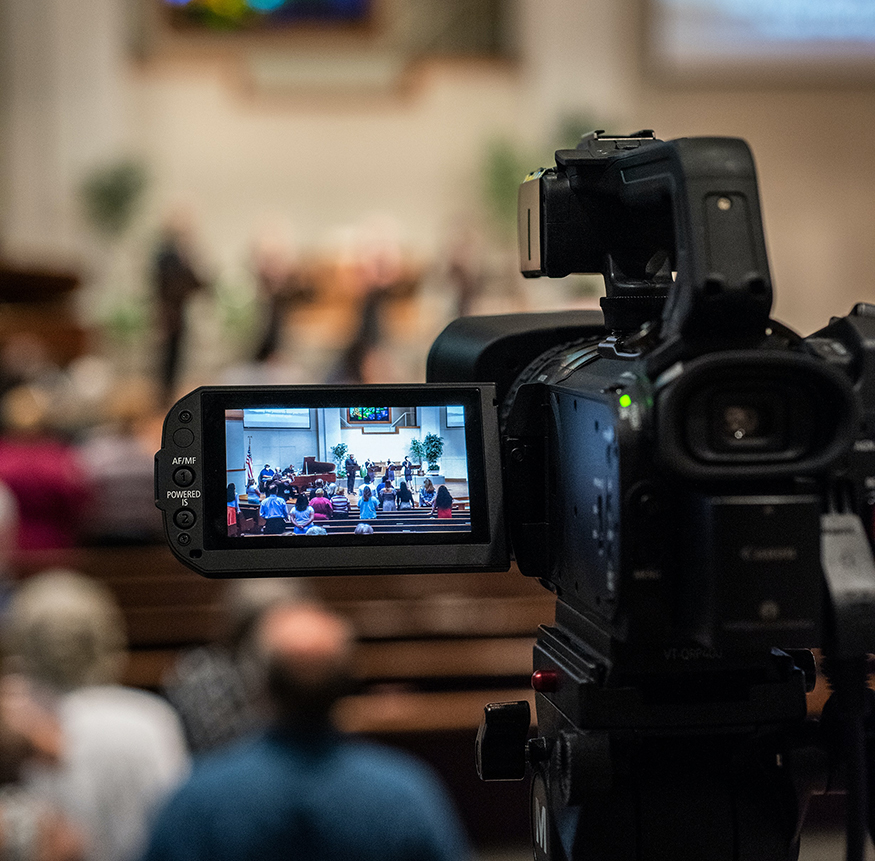
Image: Kevin Gonzalez
Camcorders have a powerful built-in optical zoom designed to shoot video.
These specially calibrated zoom lenses excel at autofocusing and tracking moving objects.
They can zoom in to capture distant objects or people you can’t get physically close to.
It is ideal for travel bloggers, events or for filming distant objects.
I use the camcorder’s zoom action to capture creative videos of city life. I used the pan and zoom action to create the illusion that I was getting closer to an object.
Swapping the DSLR and mirrorless camera lens for a zoom lens is possible, but not instantly, like a camcorder.
A digital camera’s zoom lens will add to the bulk and weight of the camera, making it heavy when shooting.
6. Swivel and Twist Viewfinder Screen
Many camcorders sport a swivel and twist articulating screen. This is incredibly handy for composing shots.
The camcorder screen is superior to digital cameras when it comes to flexibility.
There is room to shoot from creative angles and experiment with different perspectives.
The articulating screen displays both the videoed scene and the controls.

Image: Polina Tankilevitch
So you can monitor battery life and remaining recording time while filming.
The swivel screen is extra handy when shooting in bright light or odd positions.
You can move the screen to face you while shooting in the opposite direction.
Finally, it enables you to compose self-videos, viewing yourself while filming.
Making it ideal for content creators who include themselves in the video recording.
7. Superior Microphone
Camcorders have a superior microphone to digital cameras. They record surround sound without buzz and prioritize sound quality.
Most have omnidirectional recording, but there is the option to attach specialized microphones.
YouTubers who have talk shows prefer to use a professional interview microphone.
8. Recording Length
Camcorders have longer continuous recording times than their DSLR camera counterparts.
Vloggers and Youtubers want to take mountains of video. So they have ample footage to edit down for the prime clips.
With a camcorder, there are fewer storage limitations and no need to change memory cards.
They are designed to film for extended time so that the battery won’t fatigue as quickly as a digital camera.
9. Video Quality
Camcorder video quality ranges from high to ultra-high-definition.
Giving exceptional results for video uploads to blogs and YouTube.
Digital cameras can produce better-quality video footage in low light.
However, they struggle to make high-quality footage when panned.

Image: Kal Visuals
10. Long Battery Life
Camcorders are designed to video all day long without draining their battery.
This is important for vloggers recording on the go and minimizing the risk of getting stuck with a dead battery.
A digital camera was not made to be a video camera and will quickly deplete the battery when filming.
What are the Disadvantages of Video Cameras vs. DSLR and Mirrorless Cameras
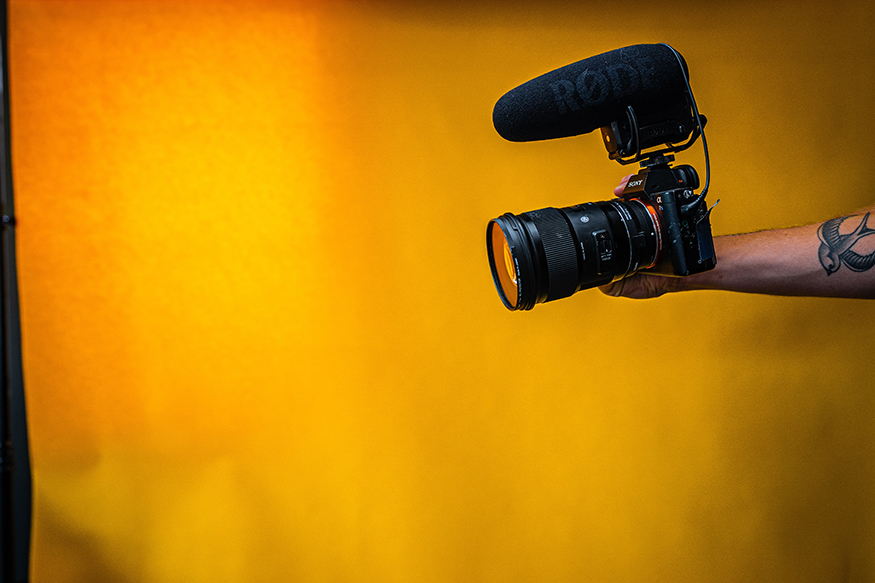
Image: Zach Ramelan
We have heard the positives, so what are the drawbacks?
1. Less Versatility
Camcorders do not have the overall versatility that digital cameras have.
They were designed to be used as a video camera, not to be used for photography.
Although individual video frames can be used as a photograph.
Their quality will be poor compared to a professional DSLR or mirrorless camera.
Unlike a digital camera, which can seamlessly change from video to camera.
2. Restriction on Lens Choices
You are restricted to filming with a camcorder’s built-in lens.
It won’t be possible to swap lenses for different visual effects.
Although the camcorder lens suits many filming purposes, it lacks diverse artistic capabilities.
DSLR and Mirrorless cameras, on the other hand, have a range of lenses available.
Giving lots of room for experimentation when videoing.
Camcorder users, unfortunately, won’t be able to avail of these creative options.
3. Control and Creative Expression
Camcorders rely on automatic exposure settings that don’t offer the same level of control.
The camcorder will decide on the video’s exposure and depth of field.
Using a camcorder, the creative input of the videographer will be restricted.

Image: Ron Lach
4. Low Light Capabilities
Camcorders are ideal in well-lit locations like a sunny day or a brightly lit studio.
Change the scene to twilight or a dimly lit nightclub, and the video will be underexposed.
Camcorders are not designed to shoot video footage in low light.
The reason for this is camcorders have smaller image sensors than mirrorless cameras.
A large sensor is essential for capturing higher-quality footage in low light.
DSLR and mirrorless camera’s larger sensors equip them for taking videos in low light.
5. More Expensive
A good camcorder can be pricey. It might not be worth it if you don’t intend to use it frequently.
Digital and mirrorless cameras are cheaper in comparison.
If you don’t plan to shoot extensively, you can use digital cameras instead of video cameras.
What are the Disadvantages of Using a DSLR Camera as a Video Camera
1. Memory, Battery and More
Usually, a DSLR camera will have limitations on its recording time. Typically, recording is capped at 30 minutes.
This can create problems for videographers who regularly shoot interviews or events.
Another problem is that the camera’s battery life will restrict your recording time.
Shooting video on DSLR tends to drain the battery quicker than camcorders.
One way to combat this problem is to carry backup batteries when videoing.
But unfortunately, DSLRs aren’t made to shoot for an extended time.
You might have backup batteries packed and extra memory cards.
You are prepared, but sorry, the DSLR tends to overheat when shooting film.
And let you down in the middle of a spectacular once-in-a-lifetime shoot.
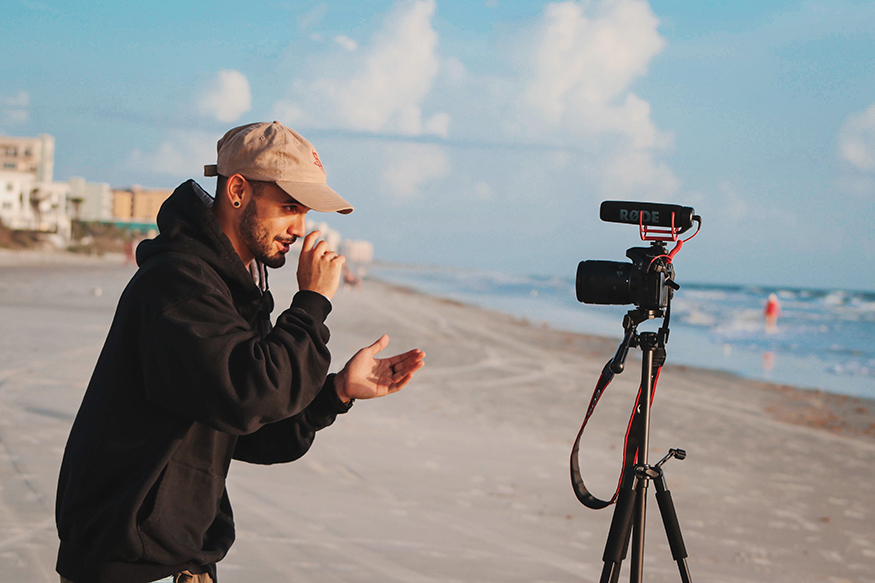
Image: Qviews
2. Lens Compatability
You will need to check the compatibility of the DSLR lens for video. An older DSLR camera might not sport the correct lens.
Camera lenses are not designed for film, although they can do the job. Lenses such as fish eye or longer focal length lenses will distort.
A digital camera lacks the fast-tracking capabilities of a camcorder for recording moving objects.
The autofocus of some digital cameras can lag, making it hard to use them when filming moving objects.
3. Focus
The DSLR camera was not designed for motion pictures and is not quick to auto-focus.
This will make it challenging to film a moving object and keep it in focus.
DSLRs are advancing daily and today sport an autofocus that can be used in video mode.
However, their autofocus can fall short of desired outcomes. They are not yet as accurate or reliable as camcorders.
Camcorders are the better option when it comes to filming moving objects. They have an advanced autofocus, which can seamlessly track moving objects.
4. Sound Quality
The in-built microphones are not entirely up to scratch for capturing quality sound.
They will pick up unnecessary background noise and can add in extra unwanted buzz.
You can solve this easily by investing in a quality external microphone.
The only drawback to this is you will have to remember to pack it when heading out to film.
5. Rolling Shutter Effect
The SLR digital camera is prone to what is known as a rolling shutter effect.
This can happen when a video pans quickly across a scene. The video footage will appear to stutter as it moves.
The rolling shutter effect can also occur when a moving object is videoed.
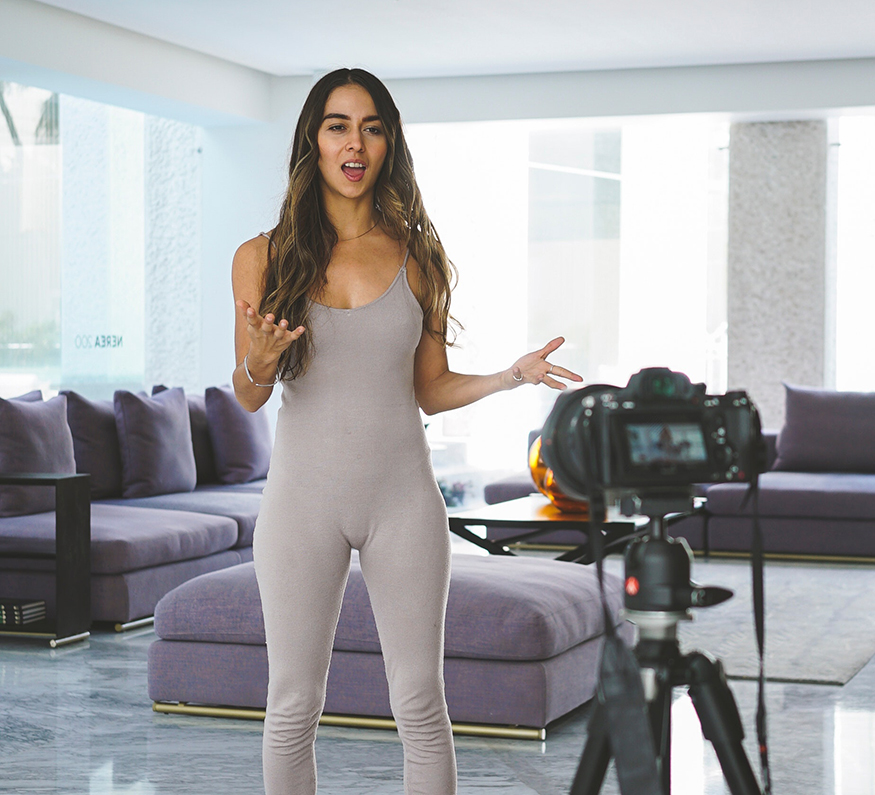
Image: Los Muertos
6. Ergonomic Design
SLR digital cameras weren’t designed to be held in a video pose for long periods.
Unlike camcorders, they aren’t fashioned to fit snuggly into your hand.
It can be tiresome to shoot using a heavy and cumbersome DSLR camera.
It is worth using extra support when shooting video using a DSLR camera for long periods.
A tripod is best if you don’t need to shoot video on the move.
Let’s face it: DSLR was designed to take single shots, not video.
7. Display Screen
Not all DSLR cameras sport a display screen; some might only have a viewfinder.
Camcorders come with a twist and swivel display screen. This is far superior for shooting videos from a range of angles.
Swivel display screens are every adventure Vloggers best friend.
Holding a DSLR to your face to video for extended periods would be challenging.
Conclusion
Camcorders are superior at capturing events, interviews and daily life.
They are far better at focusing automatically and tracking moving objects.
Although not all avenues of artistic expression will be open to you when using one. They still offer a vast array of video techniques to experiment with.
If shooting video is your primary focus, then a camcorder is your best option.
You will want a digital camera if your video requires lens changes and low-light filming.
In the end, the best choice of video camera will depend on your task.
But why not indulge your creativity and use both, like many professional vloggers?
- Read more: Guide to Buying Vintage Camcorders

Check out these 8 essential tools to help you succeed as a professional photographer.
Includes limited-time discounts.





